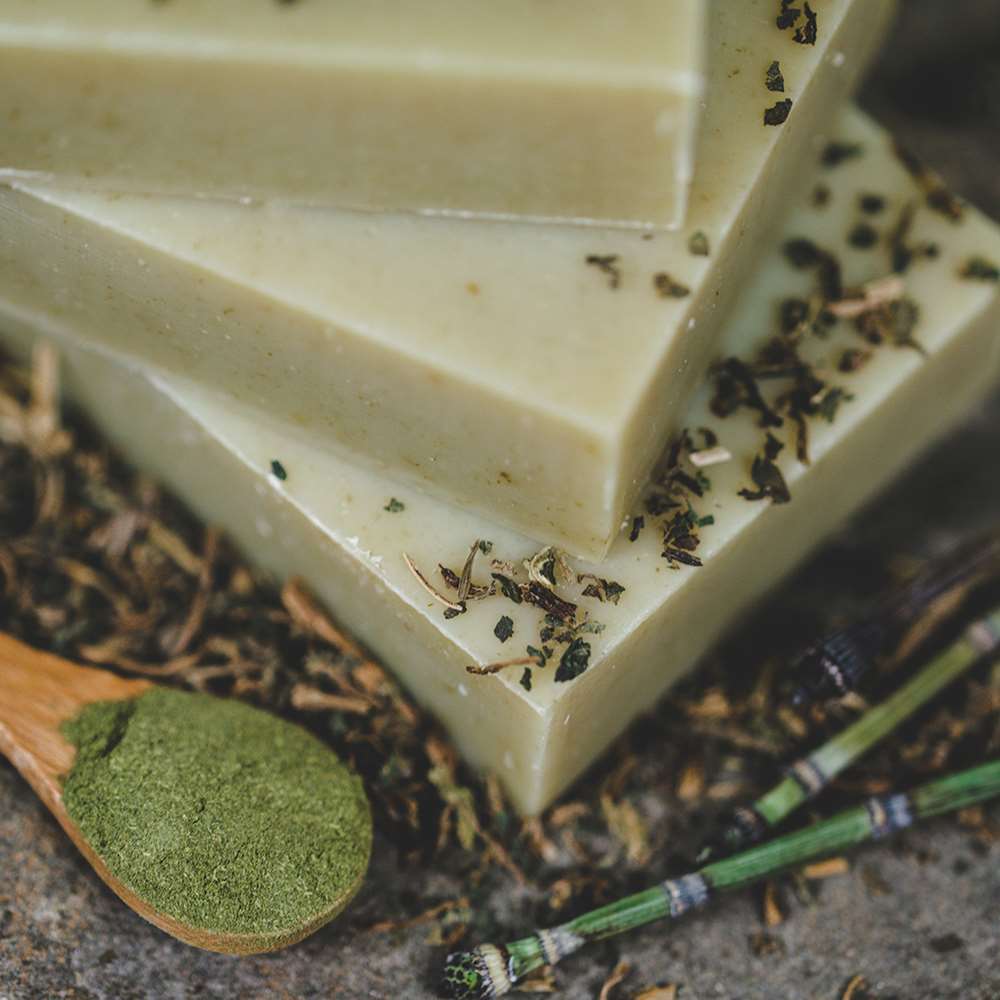
Shampoo Bar: Nettle
- Out Of Stock
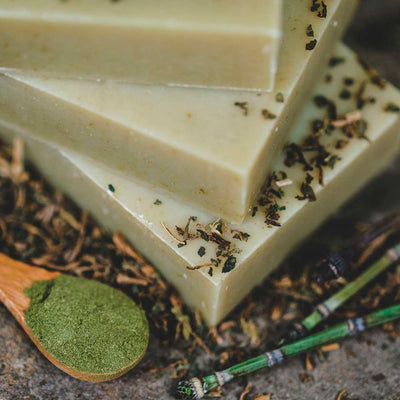

Packed with organic nettle and other hair care botanicals, this moisturizing shampoo bar is infused with a scalp stimulating essential oil blend, aloe, and nourishing plant oils and butters to help increase scalp circulation, ease dandruff, and promote fuller, stronger, more radiant hair.






Good For: All Hair Types, Thinning Hair, Dandruff, Irritated Scalp
Our nettle shampoo bar can help soothe, nourish, and calm an irritated, itchy scalp. Infused with amazing organic hair care botanicals and stimulating essential oils, it is enriched with organic shea butter, jojoba oil and aloe for extra conditioning.
Nettle is one of the oldest recorded remedies used for treating and preventing hair loss. This is primarily due to its high amount of sulfur and silica, which improves hair health by strengthening the hair shaft. It also helps with oily hair, dandruff and hair shaft breakage, stimulates the scalp, improves circulation, and helps promote fuller, more radiant hair.
🍃NATURAL, VEGAN & ECO-FRIENDLY: We are committed to healthy skin, healthy people, and a healthy planet. Packaged in recyclable boxes, there is Zero Waste & No Plastic. No synthetic ingredients. No fragrance oils, dyes, sulfates, silicones, or preservatives. Made with ingredients that are biodegradable, Certified Organic, non-GMO, cruelty-free, sustainably produced, and ethically traded.
🍃OUR BARS ARE BIG & TRAVEL FRIENDLY: Our natural shampoo bars are 5.6 oz (159 g) & a perfect choice for TSA-friendly travel. They can do extra duty as a body soap or for a foamy lather wet shave. Great for camping or the gym.
A sulfate-free, silicone-free, paraben-free natural shampoo
Looking for a different shampoo bar?
Explore the world of natural shampoo bars, get answers to your shampoo FAQs and learn about the benefits, ingredients, hair type suitability, and usage tips.
Finding the right bar is important but we believe that using the proper technique to wash your hair is the best way to ensure a successful transition from synthetic shampoo to natural shampoo bars.
Our natural shampoo bars are a lot more concentrated than liquid shampoos. They contain extra oils and butters to nourish hair.
If you do not build a nice lather and rinse really well you will have areas that remain coated with the soap oils, which can make it look or feel “gummy.”
***Notice in the techniques below that we do NOT recommend lathering up the length of your hair with the shampoo bar. As you use your fingers to rinse the lather through the strands, there is enough shampoo to clean the length. These techniques help prevent coating your hair strands with shampoo residue.
If you are new to shampoo bars please our blog, "How to Use a Natural Shampoo Bar" for more detailed information.
This technique helps prevent pockets of shampoo residue in the length of your hair especially if you have long or thick hair.
Wet Hair: One of the most important steps is to begin with thoroughly wet hair--I mean a lot of water. Be sure that the water saturates your hair all the way down to the roots.
Create the Lather: There are two possible ways both of which help prevent pockets of shampoo residue left in your hair that can make hair feel tacky.
 Massage the Lather into your Scalp only at the roots of the hair until you work up a really good lather
Massage the Lather into your Scalp only at the roots of the hair until you work up a really good lather
Using your Fingers like a Comb: smooth the lather down the length of your hair as you rinse with water. To prevent tangles, be sure to always work from the top down, use your fingers like a comb, not a mixer, and don't pile your hair on your head,
Rinse, rinse, rinse, rinse and rinse again. I cannot stress how important this step is to shampoo bar success. In order to remove the excess shampoo, which can leave a filmy feeling and weigh hair down, do NOT rush this step! The rinsing should take longer than washing and lathering time.
If your hair has a residue before or after shampooing, use an Apple Cider Vinegar Rinse or a baking soda clarifying rinse.

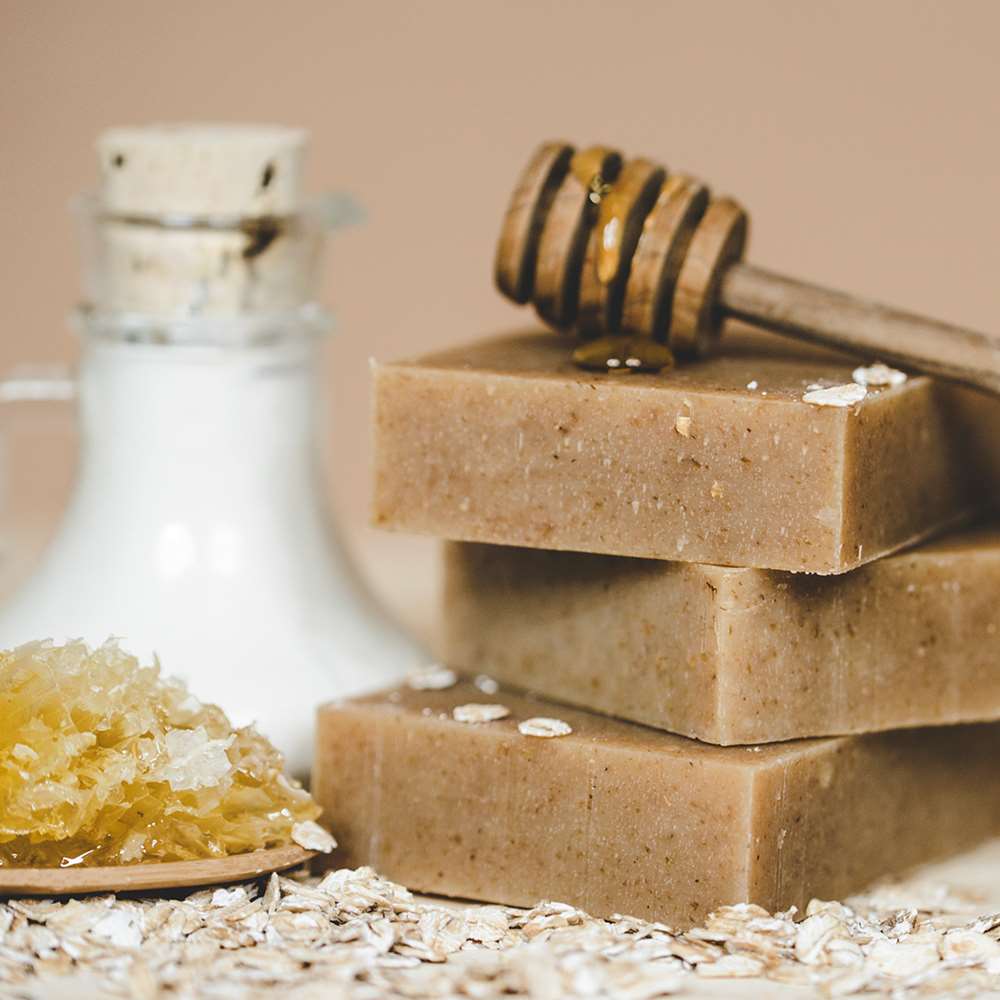
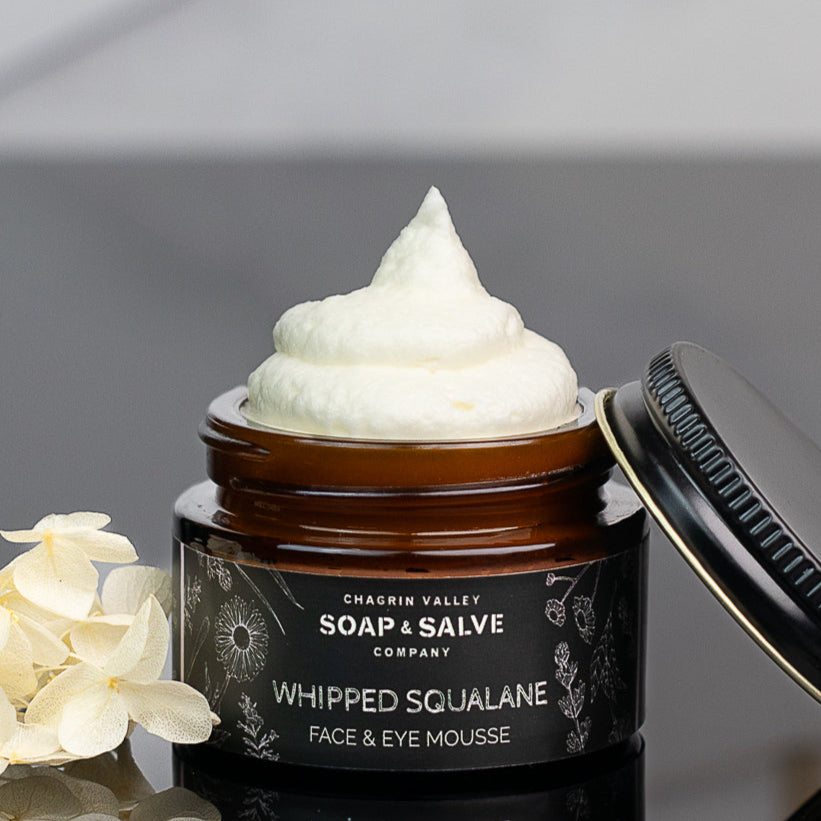
Total price: $42.40
Create Your Own Bundle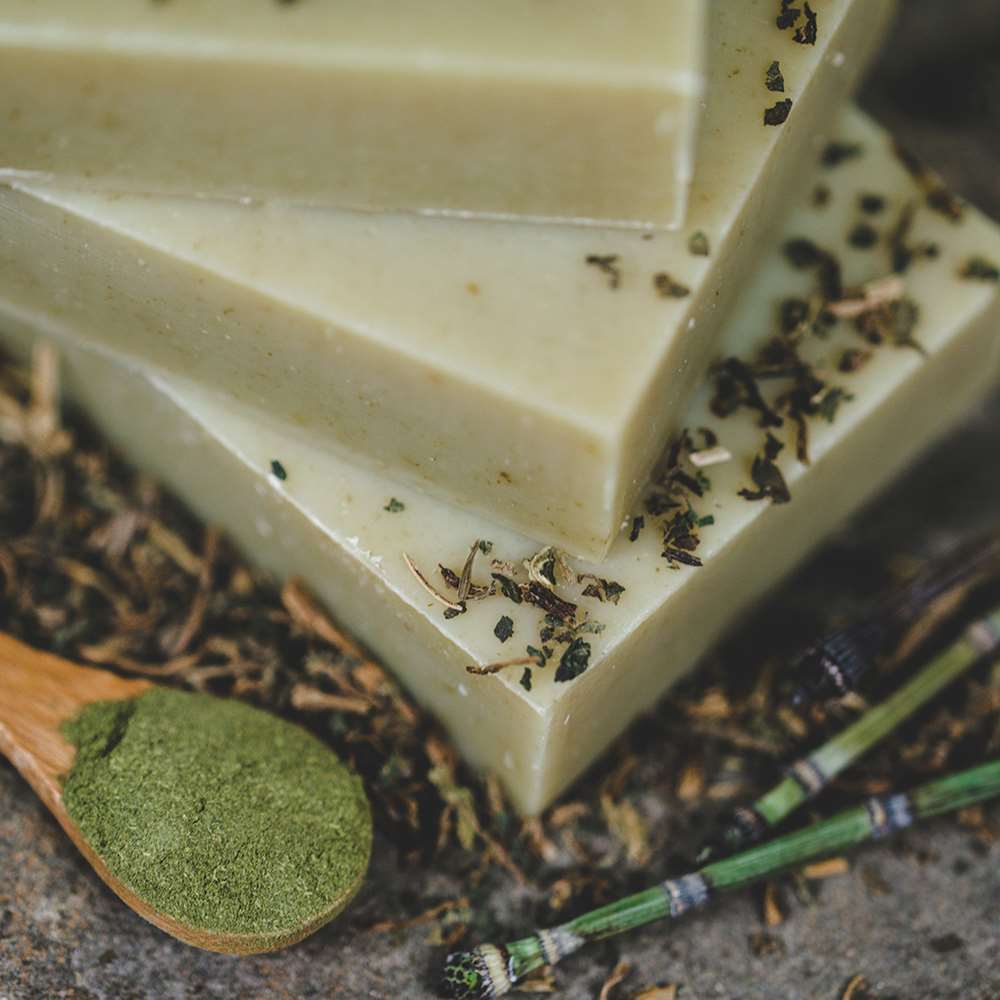
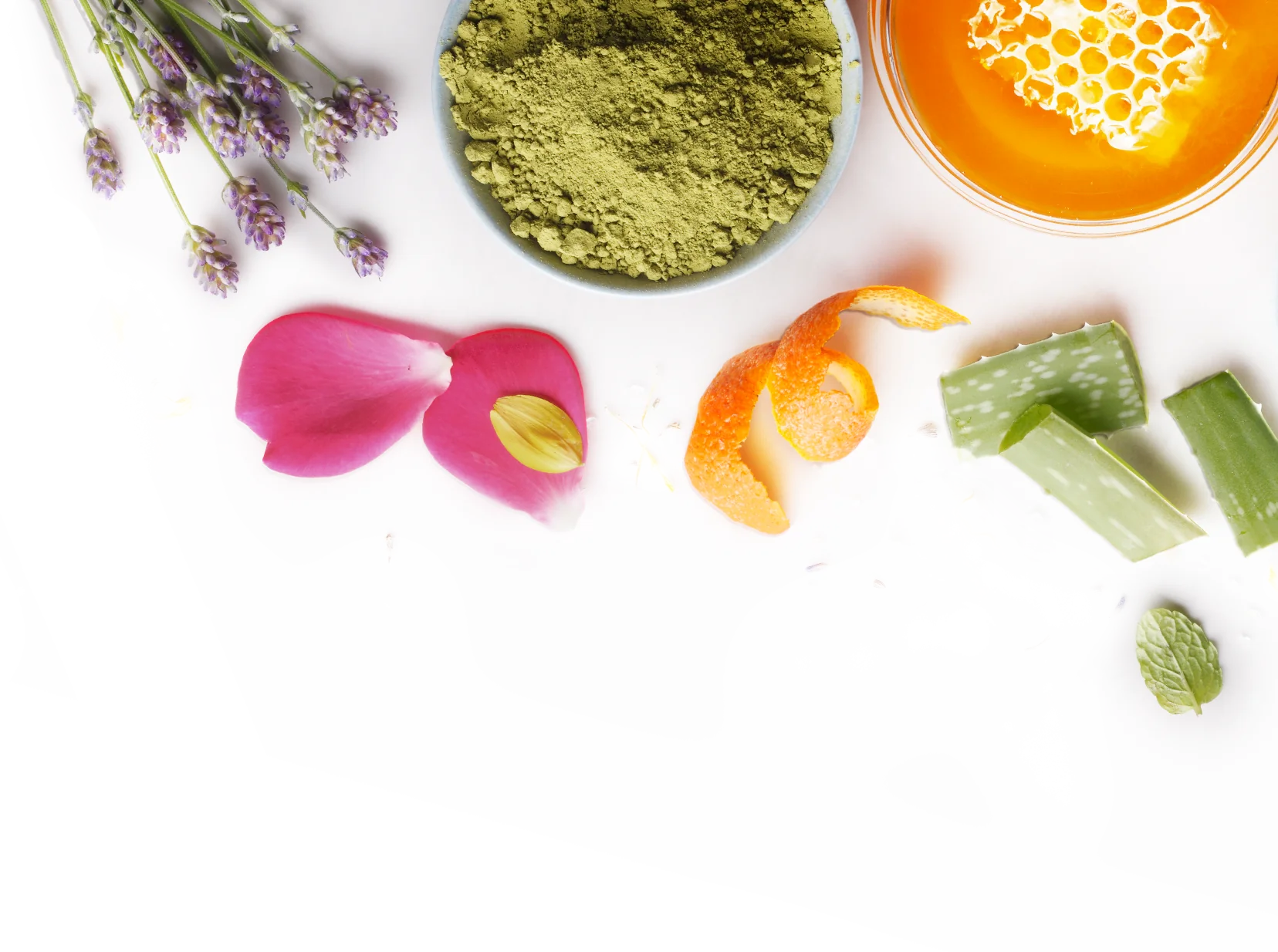
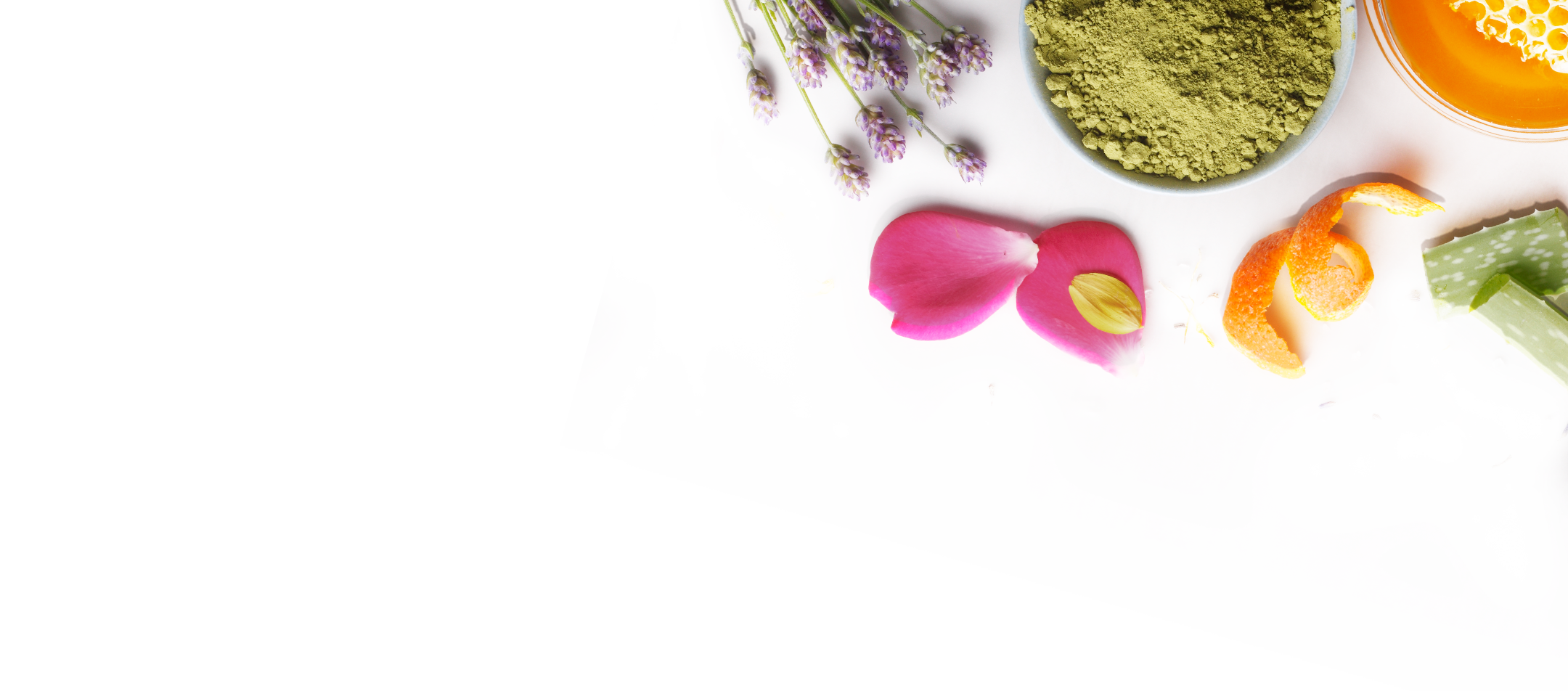
The goal is simple: to Harness the Power & Simplicity of Nature® to cleanse, soothe, heal, and protect your skin and hair!
Our unique formulas rely on moisturizing oils and butters, healing botanicals, and pure essential oils. We choose every ingredient with one end-result in mind….the BEST possible natural skin care for YOU!
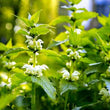
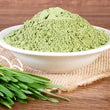
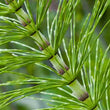
Organic Canola Oil infused with Organic Botanicals Nettle, Rosemary, Fenugreek, Horsetail, Green Tea, Parsley
|
*Ingredient is Fair Trade Certified ^Used in the saponification process to turn oil into soap and glycerin. None remains in the finished product.
Made with certified organic Flaxseed Oil, Shea Butter & Nettle
|
In my youth I had pin-straight hair and was envious of friends with wavy and curly hair. But those friends were jealous of my straight hair! Whether your hair type is straight, wavy, curly, coily, or somewhere in between, your locks are beautiful.
In the same way that understanding your skin type is important for creating an effective skincare routine, determining your hair type can play a huge role in helping you to reach your hair goals.
Hair type has 4 major categories: straight hair (type 1), wavy hair (type 2), curly hair (type 3), and coily hair (type 4). These 4 types of hair are further categorized into A, B, and C subtypes creating 12 total categories.

The best way to determine your hair type is to see your hair in its natural state. By simply looking at your hair you can recognize some obvious characteristics. The next time you wash your hair, allow it to air-dry without any styling or hair products. This will help you to define the natural shape or pattern (texture) of your hair. For example:
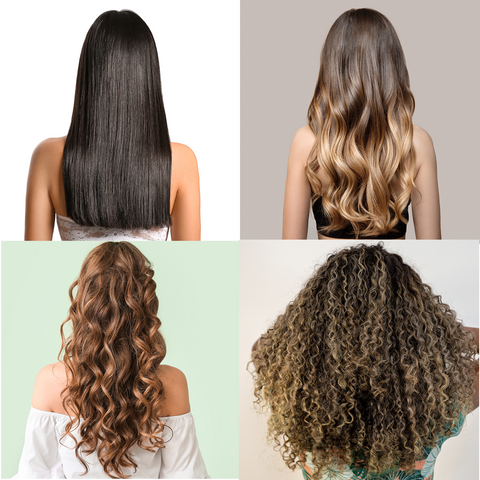
It is important to remember that most people do not have just one type of hair. They often have two different hair textures on various parts of their head.
Each of these hair textures will need special care and attention to enhance its natural best characteristics. Also, even though two people share the same natural wave, it does not mean they possess the same exact hair type. You are unique!
The words "thick" and "thin" can be confusing since you can have a lot of very thin hair and vice versa.
The density is the thickness or diameter of an individual hair strand. To determine your hair density use a single strand hair and compare it to the size of a piece of typical sewing thread. Fine hair is thinner than the thread, medium hair is similar in width, and coarse hair is wider. Hair density can affect how it will react to certain products and how well it will hold different hairstyles. There are 3 basic categories:
Thin hair does not style very easily. Medium hair is relatively easy to style and can hold curls for a longer time period. Thicker strands are very easy to curl, but because they are less pliable, they can be difficult to style or hold their shape.
Overall thickness refers to the total amount of hair on your scalp, which can range from thin to thick. When you gather your hair into a ponytail how much hair can you collect?
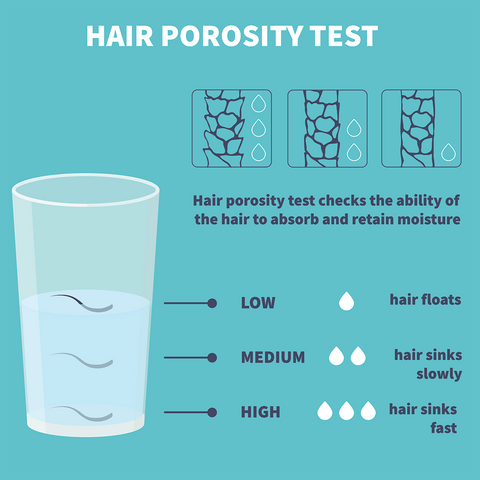 Porosity refers to your hair’s ability to absorb moisture as well as hair products. You can easily determine the porosity of your hair with a simple experiment.
Porosity refers to your hair’s ability to absorb moisture as well as hair products. You can easily determine the porosity of your hair with a simple experiment.
It seems like hair with high porosity would be well hydrated all the time since it can easily absorb moisture easily. However, due to the gap areas around the cuticle, the hair also loses moisture very easily, which can result in hair that is dry, brittle, frizzy, and prone to breakage.
On the other hand, that flattened cuticles of hair with a low porosity actually blocks moisture from being absorbed into the strands. Since hair care products are not readily absorbed, product buildup on hair strands is often a problem. Hair care products should be applied sparingly while hair is still damp so product is more easily absorbed and distributed.
To keep your hair healthy and nourished, it is important to develop a haircare routine that includes proper hydration. Knowing your hair type is crucial, as it helps you choose the right products for straight, wavy, curly, or coily/kinky hair.
Most people find that shampoo bars are easier on color-treated hair than commercial shampoos.
We have many customers who color their hair and use our gentle shampoo bars. One customer who "darkens" her hair wrote to tell us that she is now able to go one month longer before recoloring her hair.
Another customer who "lightens" her hair, wrote that the color stays "nicer" longer and she does not get that "brassy" blonde color anymore.
All of our shampoo bars are mild enough for color-treated hair, but since everyone's hair and coloring products are different, please do a strand test to judge for yourself.
To do a strand test, shampoo a strand of hair in a non-conspicuous area and rinse. Notice if there are any changes.
For color-treated hair, we recommend creating a lather in your hands rather than rubbing the bar directly on your head. Then using your fingers massage the lather into your scalp at the roots of the hair until you work up a really good lather.
It is also best to rinse color-treated hair with cool or lukewarm, not hot, water.
Choose your shampoo bar based on your hair type, knowing that coloring hair may change its texture.
Permanent hair color does not simply stain your hair but penetrates the shaft to alter the natural hair pigment. Since the outer cuticle of the hair has been penetrated by the hair dye, your natural hair oil may have trouble penetrating the hair shaft. As a result, your hair may become more dry or brittle.
Since it takes time for the hair cuticles to fully close and trap in the color, be sure to follow the directions from your salon or the product package as to how soon you should shampoo after coloring hair.
Also, note that chlorinated water can change the hue of your color-treated hair.
The good thing about the shampoo bars is that they actually prolong color - before I started using them, I'd have to dye my hair every 3 weeks, now it's every 5-6 weeks. Venessa, Indiana
For more information read our blog, "Everything You Want To Know About Natural Shampoo Bars!"
The wholesome goodness of our handcrafted soap is available for your hair.
Shampoo bars are an all natural conditioning shampoo in a solid bar form. Yes, this is real shampoo in a solid bar. Shampoo bars are not a new idea.
They were commonly used before liquid detergent shampoos and conditions were invented in the 1940s.
Although the process for making a shampoo bar is the same as making soap, our shampoo bar "recipes" are specially formulated with natural plant oils, butters, botanicals and essential oils that nourish your hair and scalp.
Our shampoo bars contain no artificial fragrance, color, preservatives, detergents, alcohol, urea, formaldehyde, sodium lauryl sulfate, DEA, propylene glycol - or any of the other synthetic hair care additives.
Each of our shampoo bar selections contains a different blend of natural plant oils, essential oils, and herb infused oils. No two recipes are the same.
Click here for help choosing an all natural shampoo bar!
Please read "Everything About Shampoo Bars!"
Conventional shampoos and conditioners, even some that claim to be natural, contain waxes, silicones, or other additives that coat your hair to make it feel smooth. They also contain synthetic detergents which rinse out more easily than a soap-based shampoo bar.
Since our natural sulfate-free shampoo bars do not strip hair like detergent-based shampoos, you may notice your hair feels different immediately after washing because your hair is accustomed to the squeaky clean feel of a detergent-based shampoo.
Switching from conventional shampoo to a natural shampoo bar may mean a transition or adjustment period. While many folks have little problem with their hair adjusting to a new routine, some do.
Since everyone's hair is unique it is difficult to tell you exactly what your transition, if any, will look and feel like. Your hair may feel greasier than normal or it may even feel drier than normal. It may feel waxy, coated, or just weird as your scalp works to re-balance its oil production.
The transition period can range from a few days to a few weeks. It really depends on how damaged your hair is, how much residue and build-up is present, your genetics, your water, and even the technique that you use to shampoo your hair.
Transition is literally a time for your hair, which has been addicted to chemical-laden shampoos, to go through withdrawal, and learn to live a chemical-free life.
We have been making and using natural shampoo bars for over 14 years and have received so many questions.
It may take some patience, but if you can persevere, your reward will be healthy, soft, and silky hair.
For more detailed information and great transition tips please read our blog "Tips Adjusting To Shampoo Bars."
Check out our selection of ACV Rinses
I wish I could use an apple cider vinegar (ACV) rinse very day. Besides creating tangle-free locks, I also love the way it makes my hair look and feel. As I have gotten older my hair has become drier and I can only use an ACV rinse 2 or 3 times week.

Blog: Make Your Own Natural Vinegar Hair Rinse
Men and women with short hair seldom have hair adjustment problems to natural shampoo bars. However, folks with long hair may have to change their shampoo technique when switching from commercial liquid shampoo or synthetic detergent shampoo bars to natural bars.
We have discovered that people with long hair often feel the need to use too much shampoo. Also, it is more difficult to rinse shampoo out of all the little nooks and crannies in long hair. As a result, there are pockets of soap residue left in the hair that make hair feel tacky.
I have found that many times the proper technique makes all the difference.
 I have long, fine hair. Below is my technique for using a shampoo bar.
I have long, fine hair. Below is my technique for using a shampoo bar.
Dry and style your hair as usual!
 Although we get asked this question often, it is a very difficult one to answer, because the bottom line is . . . how old is the bar? Is It freshly cut or has it been allowed to cure?
Although we get asked this question often, it is a very difficult one to answer, because the bottom line is . . . how old is the bar? Is It freshly cut or has it been allowed to cure?
Handmade soap and shampoo bars made using the cold process method and at the end of the soap reaction (saponification), they still contain water. The curing process allows excess water to evaporate.
Our freshly cut full-size bars are soft and weigh approximately 6.0 to over 6.5 ounces.
These bars will lose approximately 12% of their weight as most of the water evaporates during the first 6 to 8 weeks of curing time. This means that an average fresh bar, at 6.5 ounces will weigh approximately 5.7 ounces after about 8 weeks.
At Chagrin Valley Soap, our soap and shampoo bars are cured for about 10 to 12 weeks before selling and moisture will continue to evaporate over time as the bar ages. So, as our soap and shampoo bars sit waiting for a new home they will continue to shrink in size.
Some soap makers use the fresh-cut weight on their packaging, but we feel that is an inaccurate description. We use the average weight of our bars after at least a 10 week curing time.
While some companies allow their soaps to cure for only 4-weeks, but we know that our longer, slower curing time ensures a milder, harder, longer-lasting bar, with a very rich lather.
Some soap companies shrink wrap their soap bars to help prevent continuous shrinkage due to evaporation. We have a few big problems with that idea. First of all, we know that we definitely do not need any more plastic added to our planet. Secondly, although we know there will continue to be a small weight (and scent) loss over time, we prefer that over sacrificing the quality of our soap.
Since each of our soap/shampoo recipes is different and the percent of liquid used varies, the amount of water that evaporates over time and the bar size will also vary.
The average weight of Chagrin Valley full-size natural soap and shampoo bars is about 5.2 to 5.6 ounces after 10 weeks of curing. The average full-bar dimensions in inches are approximately 3.75 x 3 x 1.
Our Mini Bars of Soap and Shampoo (Loofah Foot, Pet Bars & Camping) weigh approximately 3 to 3.6 ounces.
Our Natural Soap and Shampoo Trial Size Sample Bars weigh approximately 1.5 to 2 ounces.
Summary of the variation in weight
Compare our bar size! Most handmade soap companies sell full size bars that are about 3.5 to 4.5 ounces. Our customers have told us that they like the larger size bars.
When you compare the prices of other soaps, please compare SIZE and ingredients as well!
For a great explanation of the process involved in making soap please read our blog, "How We Make Soap"
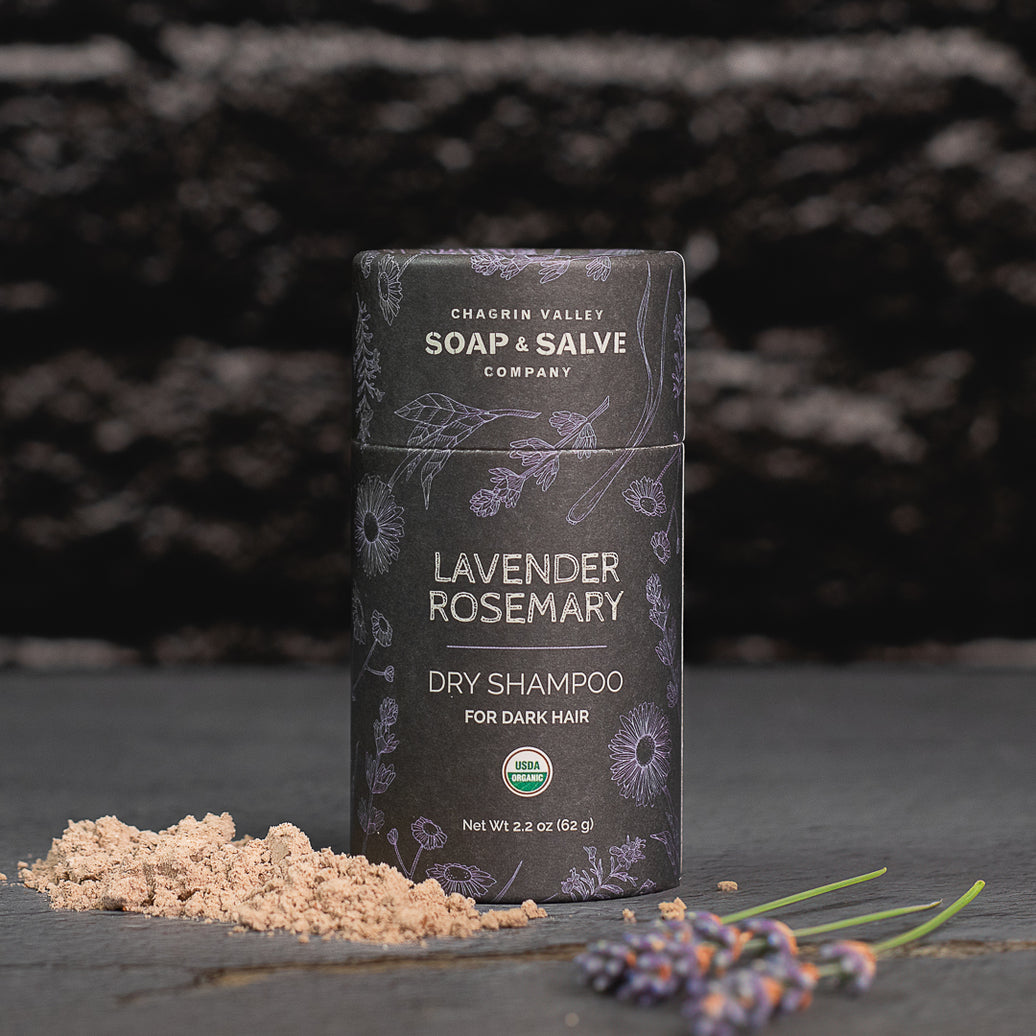
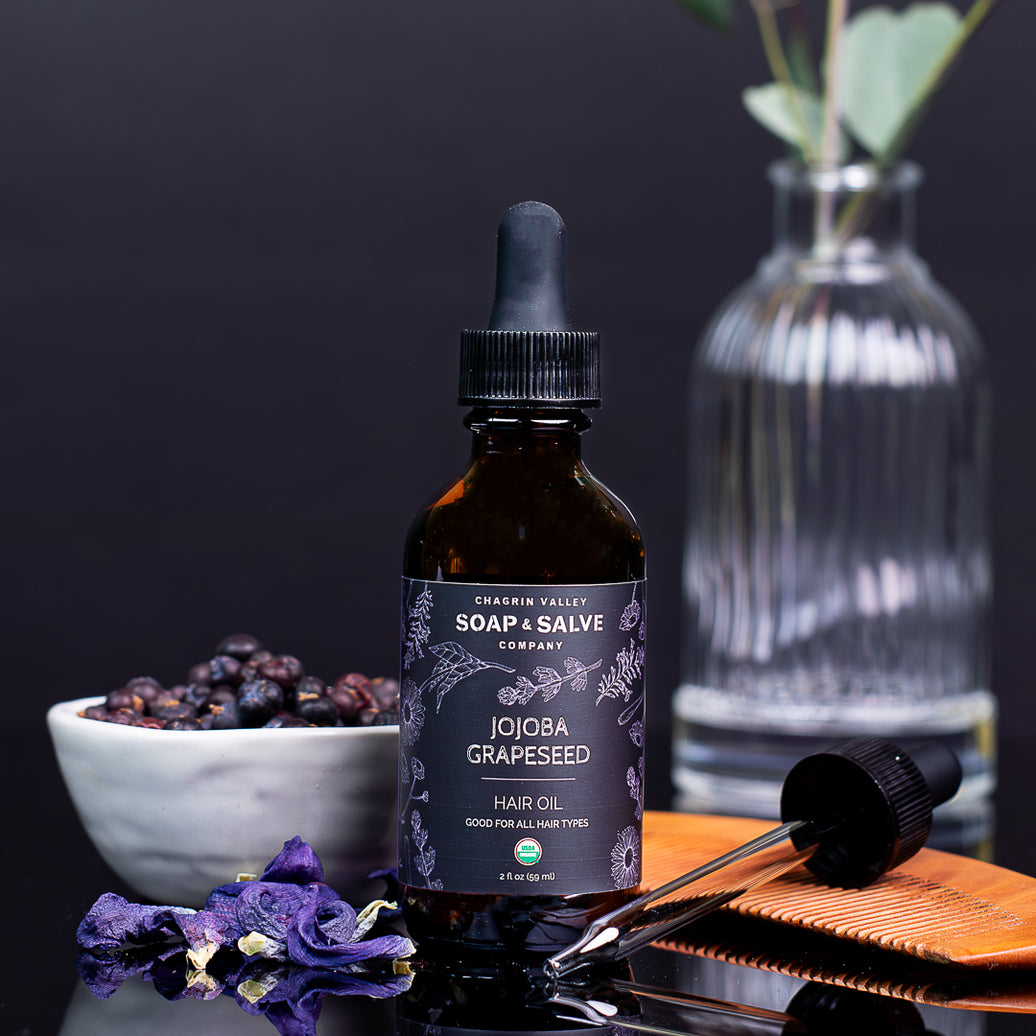
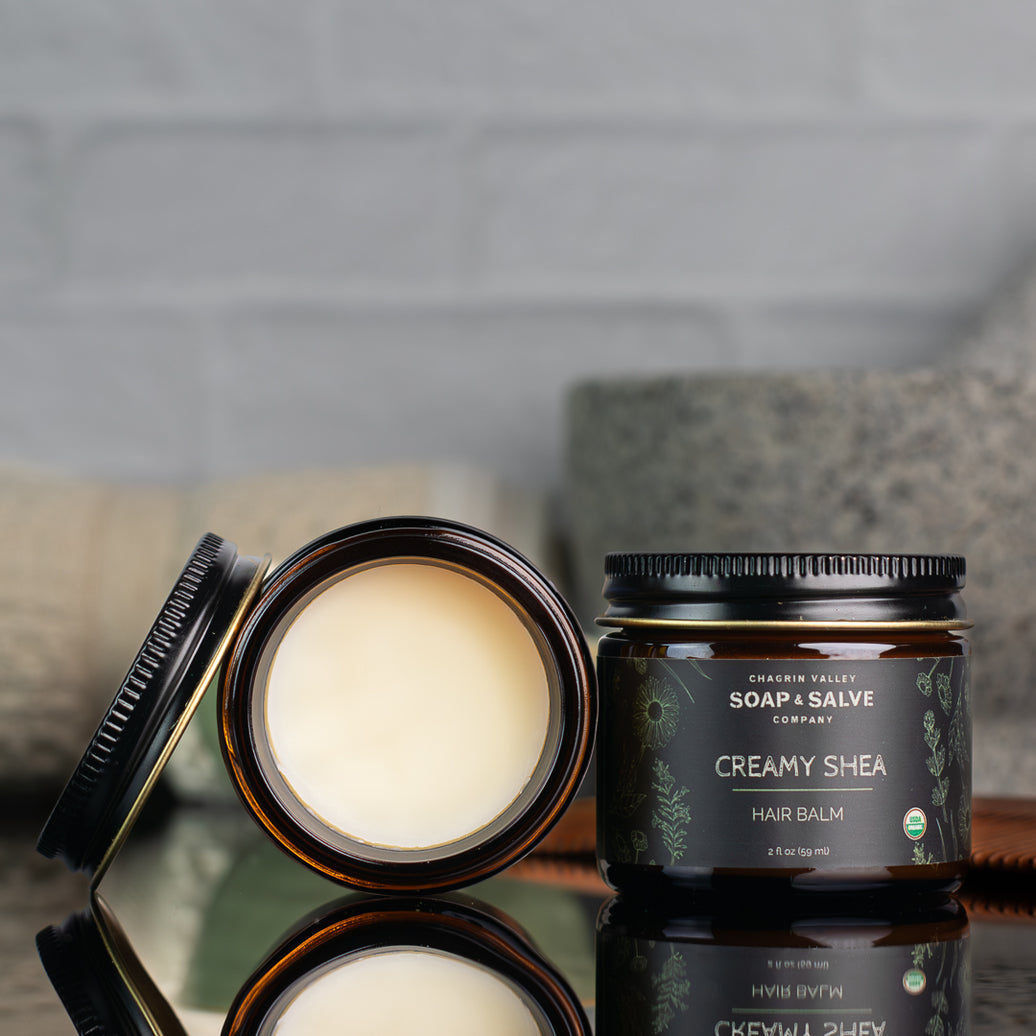
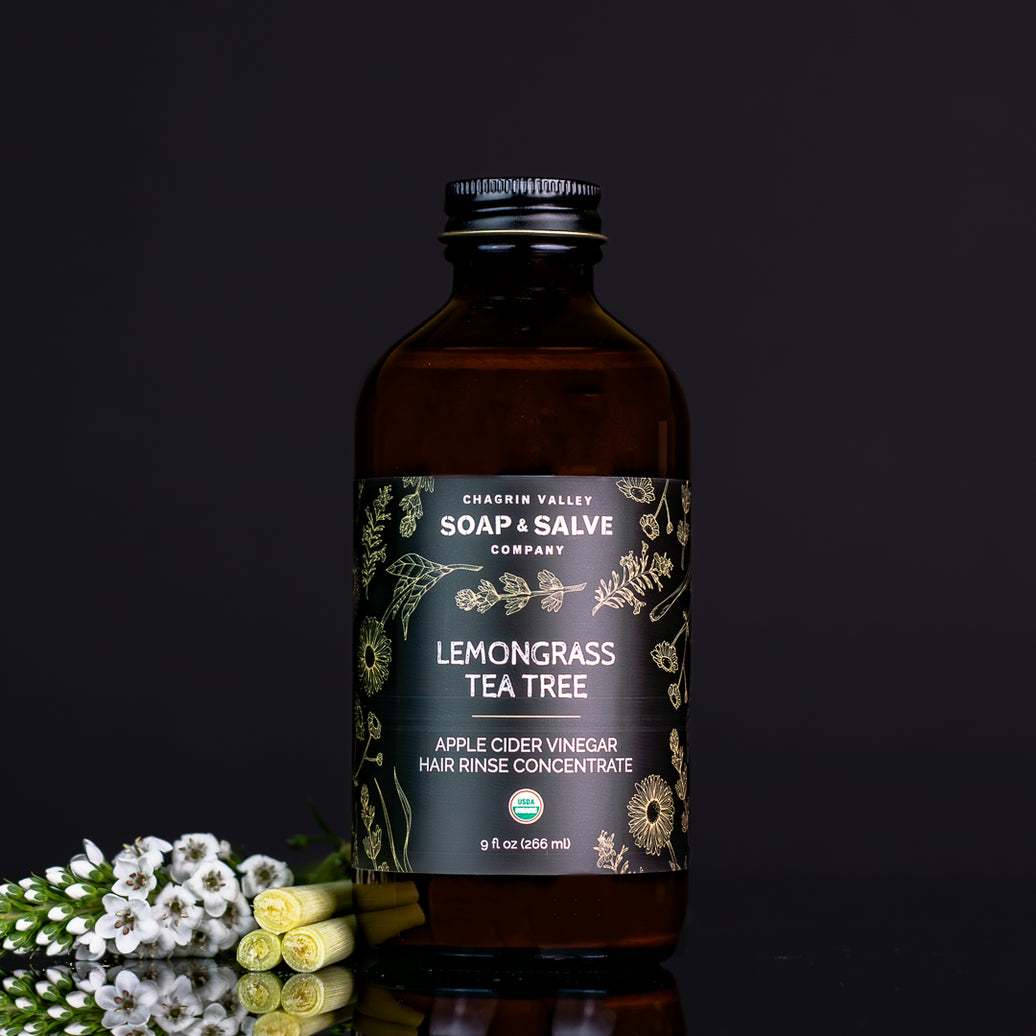
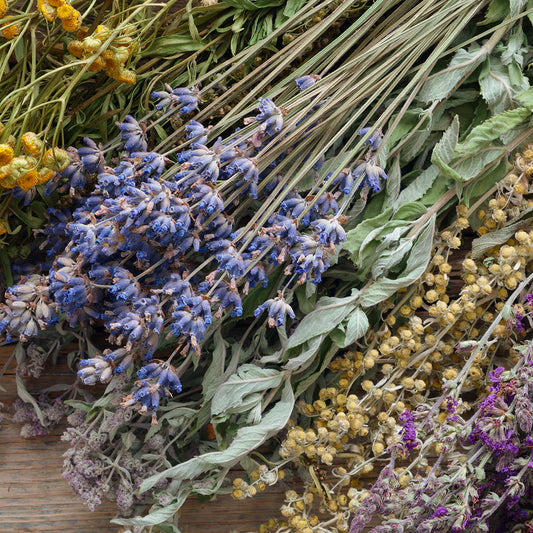
Herbal infusions have been used for centuries to naturally soften hair, increase manageability, and restore luster, body, and bounce. Learn why they work and how to prepare them.
Read Post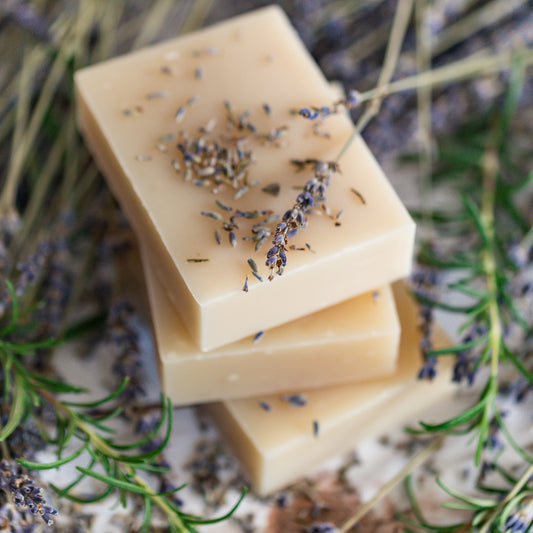
Explore the world of natural shampoo bars, get answers to your FAQs and learn about the benefits, ingredients, hair type suitability, and usage tips. Start enjoying healthier, happier hair.
Read Post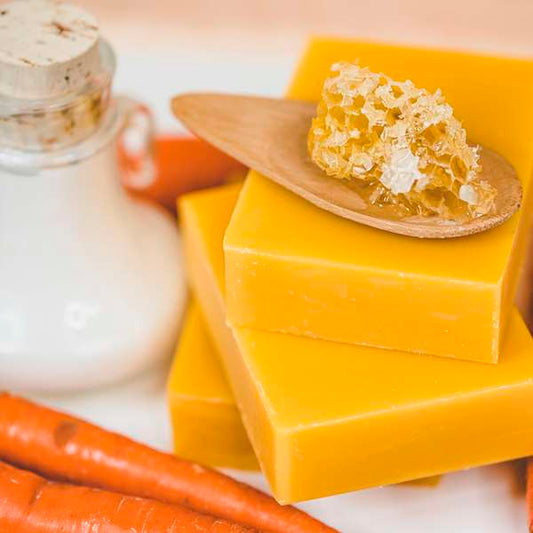
Help Me Choose a Natural Shampoo Bar: Everyone's hair is unique. For that reason, every one of our natural shampoo bars is made from a different recipe. We wish that we could recommend the perfect natural shampoo bar for each individual hair type, but here are some suggestions.
Read Post